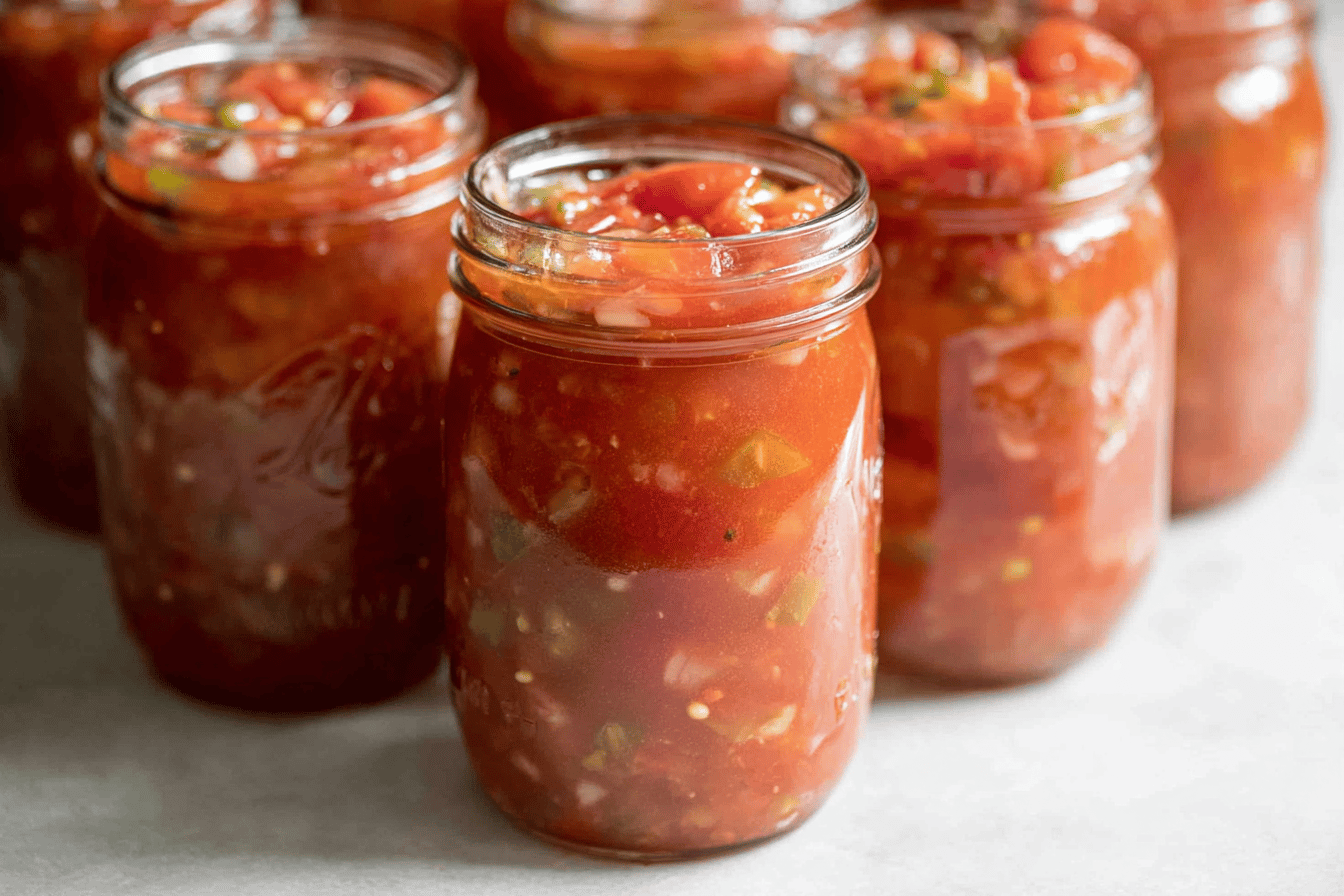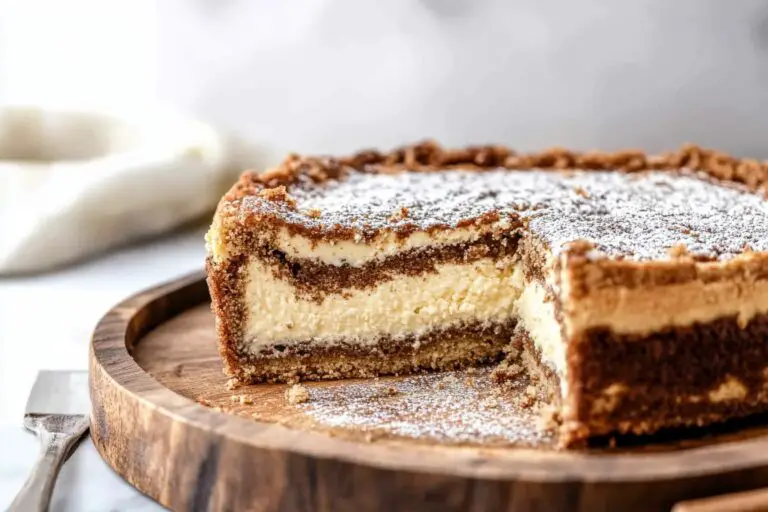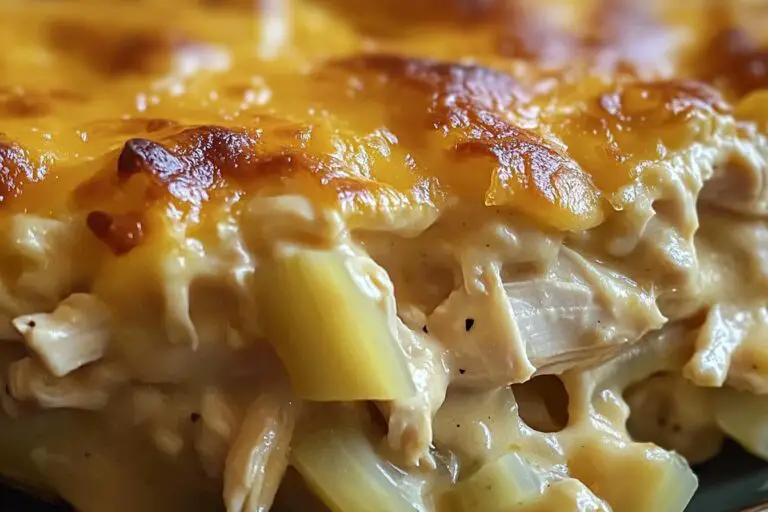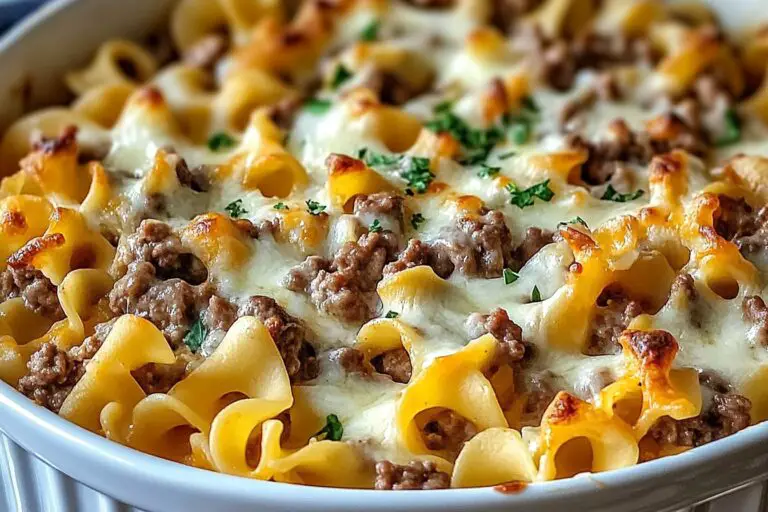The Best Homemade Salsa
Introduction
Making your own salsa at home is not only satisfying but also a great way to preserve those vibrant summer tomatoes for the colder months. This homemade salsa recipe is perfect for canning, balancing fresh flavors with just the right amount of spice. Whether you enjoy it mild or fiery, this recipe is customizable to suit your taste buds. Let’s dive into the ingredients, preparation, and how to can your salsa properly!
Detailed Ingredients with Measures
Tomatoes
Ten cups of peeled, cored, and chopped tomatoes
Green Bell Peppers
One cup of chopped green bell peppers
Jalapeños
Half to one cup of finely chopped jalapeños (adjust to taste)
Onions
Five cups of chopped onions
Garlic
Two cloves of minced garlic
Apple Cider Vinegar
One cup of apple cider vinegar
Cilantro
One quarter cup of chopped fresh cilantro
Ground Cumin
Two teaspoons
Sugar
One tablespoon
Salt
One tablespoon
Tomato Paste
One to two tablespoons (optional for a richer texture)
Prep Time
Before beginning, set aside 20 minutes to prep your ingredients. From chopping vegetables to peeling and coring tomatoes, preparation is essential to ensure your salsa tastes fresh and has the perfect consistency. Set up a clean workstation with all your canning jars sanitized and ready for filling.
Cook Time, Total Time, Yield
Cooking the salsa takes approximately 30 minutes. Combine all the ingredients in a large pot, bring the mixture to a boil, and simmer while stirring occasionally. This allows the flavors to develop and meld together beautifully.
The total time for this salsa recipe, including prep, cooking, and canning, is about 1 hour and 15 minutes. Depending on your jar sizes, this recipe yields approximately 8 to 10 pint-sized jars of salsa.
Whether you’re preparing snacks for a party, stocking up for winter, or gifting homemade goods, this canned salsa will surely impress. Enjoy the fresh taste of summer all year long!
“`
Detailed Directions and Instructions
Prepare the Tomatoes
1. Wash and core the tomatoes.
2. Place the tomatoes in a pot of boiling water for 30-60 seconds until the skins loosen.
3. Transfer the tomatoes to an ice water bath to cool.
4. Peel the skins off the tomatoes and discard, then chop the tomatoes into small pieces.
Prepare the Other Vegetables
1. Dice the onions, bell peppers, and jalapeños. Adjust the amount of jalapeños according to your desired spice level.
2. Mince the garlic.
Combine Ingredients
1. Add the prepared tomatoes, onions, bell peppers, jalapeños, garlic, tomato paste, vinegar, salt, sugar, and spices to a large, non-reactive pot.
2. Stir the mixture well to combine.
Cook the Salsa
1. Bring the mixture to a boil over medium-high heat, then reduce to a simmer.
2. Allow the salsa to simmer for 25-30 minutes, stirring occasionally, until it thickens slightly.
Prepare for Canning
1. Sterilize the jars, lids, and rims by boiling them in hot water.
2. Keep the jars hot until ready for use.
Fill the Jars
1. Carefully ladle the hot salsa into the sterilized jars, leaving about 1/2 inch of headspace at the top.
2. Use a bubble remover or a clean knife to remove any trapped air bubbles.
3. Wipe the rims of the jars with a clean, damp cloth to ensure a proper seal.
Seal the Jars
1. Place the lids on the jars and screw on the rims until fingertip-tight.
2. Do not overtighten the rims.
Process the Jars
1. Place the jars in a boiling water canner, ensuring that they are fully submerged with at least 1 inch of water above them.
2. Process the jars in boiling water for 15 minutes for pint jars or 20 minutes for quart jars.
3. Adjust the processing time based on your altitude, if necessary.
Cool and Store
1. Carefully remove the jars from the canner and place them on a towel or cooling rack.
2. Allow the jars to cool for 12-24 hours.
3. Check the seals by pressing the center of the lids; they should not pop back.
4. Store the sealed jars in a cool, dark location. Refrigerate any jars that did not seal properly and consume promptly.
Notes
Adjust Spice Level
The amount of jalapeños can be adjusted based on your preferred level of heat. Removing the seeds and membranes will result in a milder salsa.
Vinegar for Safety
The vinegar is necessary to ensure enough acidity for safe canning. Do not reduce the amount or use a substitute.
Use Fresh Ingredients
For the best flavor, use fresh and ripe tomatoes, peppers, and onions.
Storing Time
Properly processed jars of salsa can be stored in a cool, dark place for up to 12-18 months.
Burn Warning
Always handle hot jars and salsa with care to avoid burns. Use a jar lifter when transferring jars in and out of the boiling water canner.
Altitude Adjustment
If you live at an altitude greater than 1,000 feet, you may need to increase the boiling water canning time. Consult canning guides for altitude adjustments.
“`
Cook Techniques
Use Fresh Tomatoes
Using fresh, ripe tomatoes is key to achieving the best flavor for your salsa. Ensure they are firm yet ripe for the best results.
Blanching Tomatoes
Blanch the tomatoes to easily remove their skins. Boil them briefly, then place them in an ice bath for easy peeling.
Properly Sterilize Jars
Make sure canning jars are properly sterilized before use. This step ensures the salsa remains safe for long-term storage.
Simmer the Salsa Mix
Simmer the salsa ingredients together for a cohesive and evenly distributed flavor before canning.
Check Acid Levels
Ensure proper acid levels by using vinegar or lemon juice to make the salsa safe for canning and prevent the growth of bacteria.
Use a Water Bath Canner
Seal the jars using a water bath canning process to prevent spoilage and ensure a longer shelf life.
Remove Air Bubbles
Before sealing the jars, use a utensil to gently stir and release any trapped air bubbles to prevent improper sealing.
Leave Proper Headspace
When filling jars, maintain enough headspace (typically 1/2 inch) to allow for proper sealing during the canning process.
Label and Store Properly
Label your jars with the date and store them in a cool, dry place for optimal preservation.
FAQ
How long can canned salsa last?
Properly canned salsa can last up to a year when stored in a cool and dark space.
What kind of tomatoes are best for salsa canning?
Roma or paste tomatoes are ideal due to their low water content, but any ripe and fresh tomato will work.
Can I adjust the ingredients in the salsa recipe?
You can modify herbs and spices but should not change the acidity ingredients like vinegar or lemon juice to ensure food safety.
Why is acid important for canning salsa?
Acid is necessary to prevent bacterial growth, including botulism, ensuring that the salsa remains safe for consumption.
Can I use a blender for the salsa texture?
Yes, a blender can be used for a smoother consistency, but blending too much can make the salsa overly thin.
What should I do if a jar doesn’t seal properly?
Refrigerate the jar and use the salsa within a week, or reprocess it using a new lid.
How do I know my jars are sealed?
Sealed jars will have a concave lid that won’t pop when pressed in the center.
Can I use bottled lemon juice instead of fresh?
Yes, bottled lemon juice is recommended as it has a consistent acidity level necessary for safe canning.
Is it safe to double the recipe?
Yes, but ensure you maintain the correct ratio of ingredients, especially the acid component, for food safety.
Can I add other vegetables like corn or beans?
Adding low-acid ingredients like corn or beans may affect the pH. Use tested recipes if you want to include these additions.
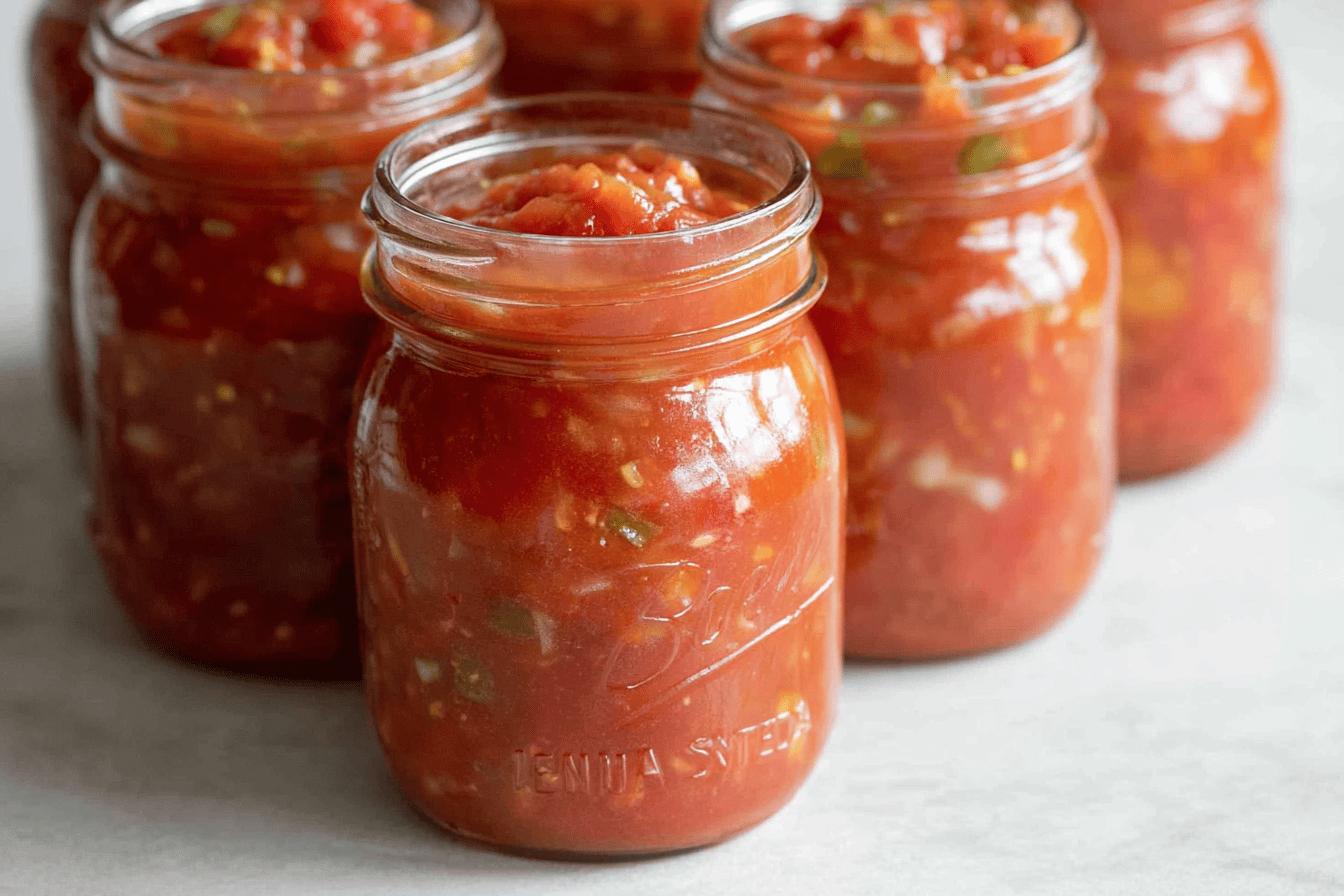
Conclusion
Homemade salsa for canning offers a burst of fresh flavors that elevate your meals throughout the year. This recipe strikes the perfect balance between convenience and deliciousness, making it a go-to choice whether you’re seeking a zesty condiment or a cornerstone for your cooking. Its vibrant taste and versatility make it an essential staple in your kitchen.
More recipes suggestions and combination
Tomato and Peach Salsa
Blend tomatoes with ripe peaches for a sweet and tangy salsa perfect for seafood dishes or chips.
Spicy Pineapple Salsa
Combine diced pineapple with jalapeños, red onion, and a squeeze of lime for a tropical zing that pairs well with grilled chicken or tacos.
Cucumber Avocado Salsa
Mix diced cucumber and avocado with fresh cilantro and lime for a creamy and refreshing topping for tacos or salads.
Roasted Corn and Black Bean Salsa
Add roasted corn, black beans, and a hint of chili powder to your salsa for a hearty and smoky variation.
Berry Salsa
Combine a medley of berries like strawberries, blueberries, and raspberries with some chopped mint and lime for a sweet and savory salsa twist.
Mango Habanero Salsa
Diced mango and the fiery heat of habanero peppers create a bold, sweet, and spicy condiment perfect for seafood or grilled dishes.
Charred Tomato and Garlic Salsa
Roast tomatoes and garlic for a smoky and rich salsa that can serve as a dip or topping for nachos.
Green Tomatillo Salsa
Use tangy tomatillos with fresh herbs like cilantro for a vibrant green salsa ideal for enchiladas or tortilla chips.
Watermelon and Mint Salsa
Dice watermelon and mix with fresh mint, red onion, and a splash of lime for a cooling summertime option.
Three Pepper Salsa
Combine bell peppers, jalapeño, and banana peppers for a colorful and flavorful salsa with a mild-to-medium heat.

